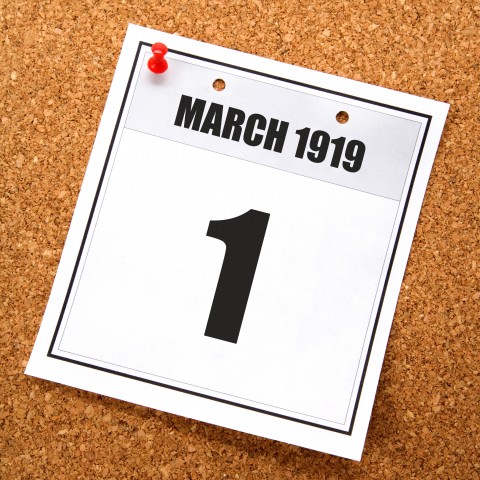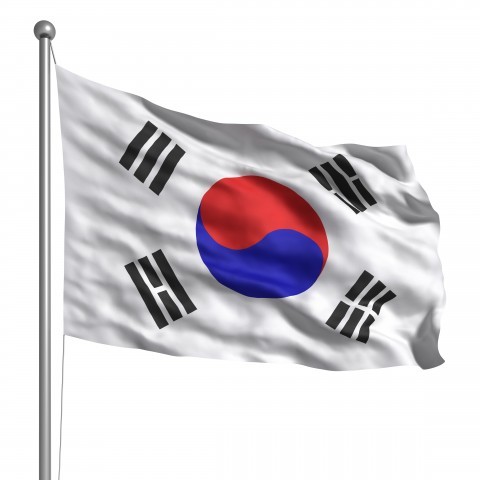On Independence Movement Day, Koreans commemorate those who sacrificed themselves for Korea’s freedom from Japan. They also celebrate that freedom and independence through a range of patriotic traditions.
In this article, you’ll learn about the March 1 Movement, Korean celebrations for it today, and one of the most notable figures associated with Korea’s Independence Movement Day.
Are you ready? Let’s get started.

1. What is Independence Movement Day in South Korea?
If you grew up in the United States, you probably remember hearing about the Battle of Alamo in school. Well, did you know that in South Korea, Independence Movement Day commemorates a similar episode in Korean history?
On March 1, 1919, underground fighters in Korea claimed independence from the Japanese, who, at the time, had Korea under its colonial rule. In opposition to this claim, Japanese police and military forces killed about 7,000 protestors who were unarmed. Following this event, the Japanese would continue its rule over Korea for another twenty-six years (1910-1945).
After 민족 대표 33인 (minjeok daepyo samsipsamin), or “the 33 nationalists,” were arrested, ordinary civilians from around Korea became inspired to support the cause. A month following the initial protest, Shanghai set up a provincial government that would serve as a way for Koreans to have their wishes and desires carried out, and ultimately to aid in the fight for freedom.
삼일절 (Samiljjeol), or Independence Movement Day, is a special holiday in Korea to commemorate this event. Further, Koreans celebrate the spirit of 독립 (dongnip), or “independence,” and courage that the protesters exhibited and infused their fellow citizens with. It was this inspiration that allowed the Japanese colonial rule to come to an end in 1945.
Did you know the formal name of Korea is Daehanminguk in Korean? This phrase means that the independence of the country of Daehanminguk will last forever. Only after gaining independence in 1945 were Koreans finally able to shout their country’s name for what it really means.
-
→ To read more about Korea’s Independence Day, read our blog post on the topic!
2. When is Independence Movement Day?
As you probably guessed, on March 1, Koreans celebrate Independence Movement Day.
3. Independence Movement Day – South Korean Celebrations
It’s evident that March 1 is still a very important day for Koreans, one on which we can think deeply about the painful history of the country. For Independence Movement Day in South Korea, celebrations are very patriotic and probably similar to your country’s Independence Day or national day.
If you’re in Korea on March 1, not only will you see the 태극기 (taegukgi), or “Flag of South Korea,” flying outside the prison, but a lot of houses will also raise the flag. There are even people who put the flag up on their cars or wear clothes with the flag.
At ten o’clock in the morning on March 1, you’ll hear sirens go off at many places. People stop whatever they’re doing, and pay silent tribute to the nationalists who lost their lives for Korea’s independence.
4. Seodaemun Prison
Many people went to jail for their support of the Independence Movement. One of the biggest jails was the Seodaemun Prison, which was established during Japanese rule. A part of this prison is still preserved today, and Koreans come here to honor those who lost their lives while imprisoned.
Perhaps the most famous of these people was a woman named Yu Gwan-sun, or 유관순 (yu gwansoon) in Korean. She was jailed at seventeen years old for her involvement in the Independence Movement, and today, her cell is called Ryu-Gwan-Sun Cave.
This is a popular Korea Independence Movement Day location for people to visit.
5. Must-Know Vocabulary for Independence Movement Day
Ready to review some of the vocabulary words from this article? Here’s a list of the most important words and phrases for Independence Movement Day!
- 삼일절 (Samiljjeol) — “Independence Movement Day”
- 민족 자결주의 (minjeok jagyeoljuui) — “self-determination”
- 국가 (gukga) — “nation”
- 독립 기념관 (dongnip ginyeomgwan) — “Independence Hall of Korea”
- 독립 (dongnip) — “independence”
- 정부 (jeongbu) — “government”
- 태극기 (taegukgi) — “Flag of South Korea”
- 식민지 (singminji) — “colony”
- 1919년 3월 1일 (cheongubaeksipgunyeon samwol iril) — “March 1, 1919”
- 민족 대표 33인 (minjeok daepyo samsipsamin) — “the 33 nationalists”
- 기미 독립 선언서 (gimi dongnip seoneonseo) — “the Declaration of Independence written in 1919”
- 유관순 (yu gwansoon) — “Yu, Gwan-sun”
To hear the pronunciation of each word and phrase, and to read them alongside relevant images, be sure to check out our Korean Independence Movement Day vocabulary list.
Final Thoughts
As you can see, in Korea, March 1 is a major holiday and a very patriotic, melancholy time for the Korean people.
How do you celebrate Independence Day in your country? Who are some of the most notable figures? We look forward to hearing from you!
If you’re interested in learning more about Korean culture and holidays, please visit the KoreanClass101 pages below:
- All About Korean Culture and Society
- Top 10 Must-Try Korean Street Foods in Seoul
- Hyeon Chung Il: Memorial Day in Korea
- Jeheonjeol: South Korean Constitution Day
- Pepero Day: Fun Facts About Pepero Day in South Korea
- Tourist Attractions in South Korea
- Essential Idioms That Will Make You Sound Like a Native Speaker
Whatever your reasons for developing an interest in Korean culture or the language, know that KoreanClass101.com is the best way to expand your knowledge and improve your skills. With tons of fun and immersive lessons for learners at every level, there’s something for everyone!
Create your free lifetime account today, and start learning with us.















